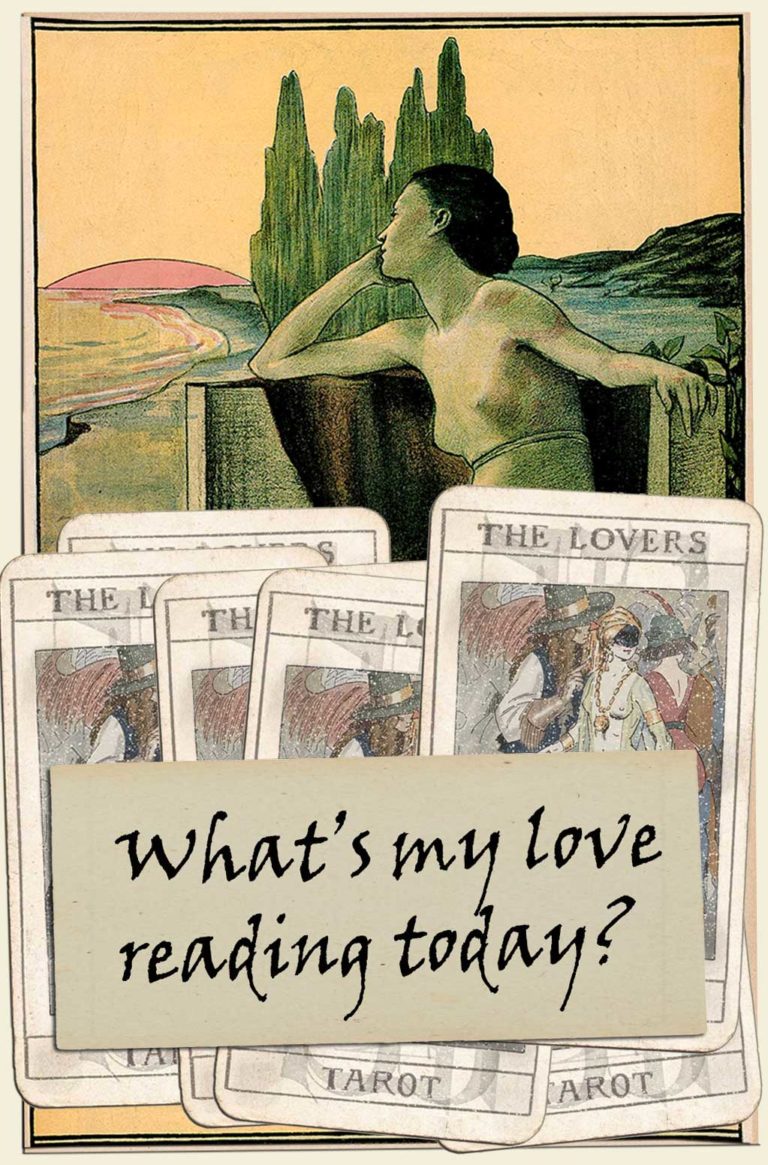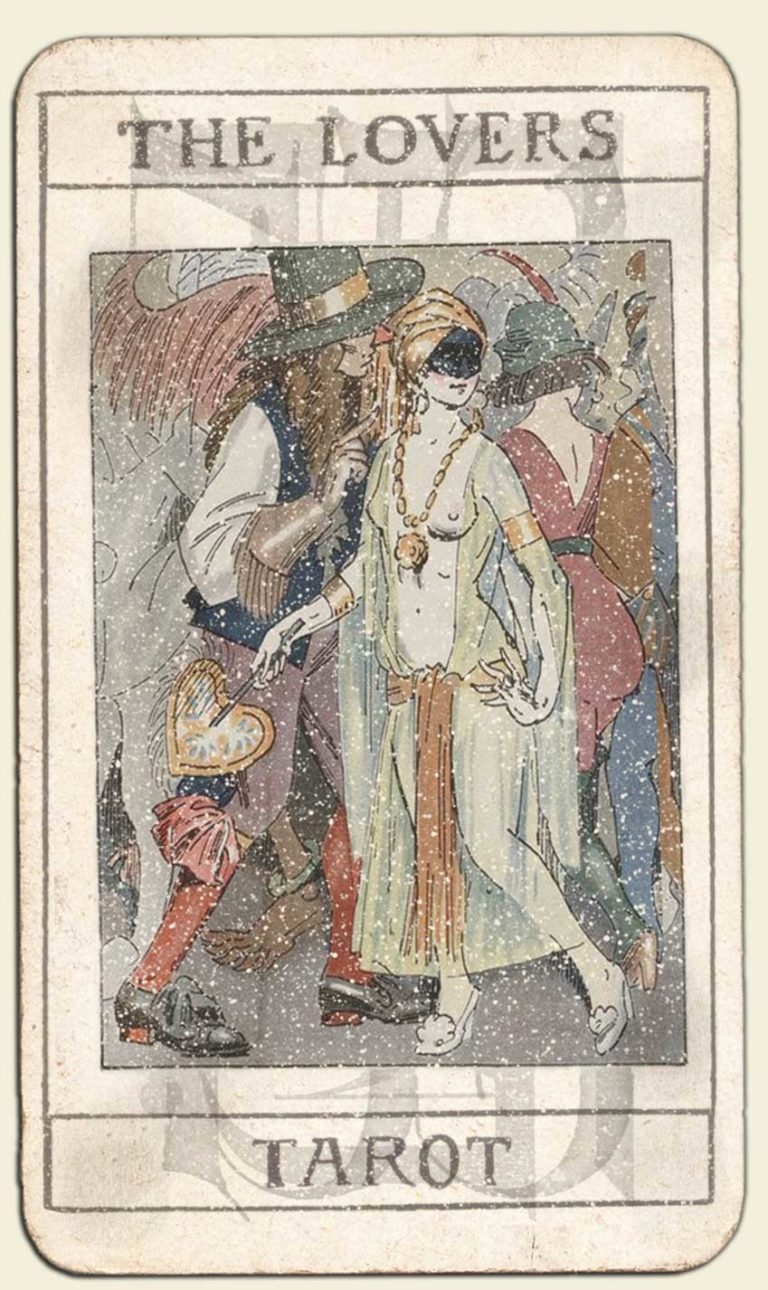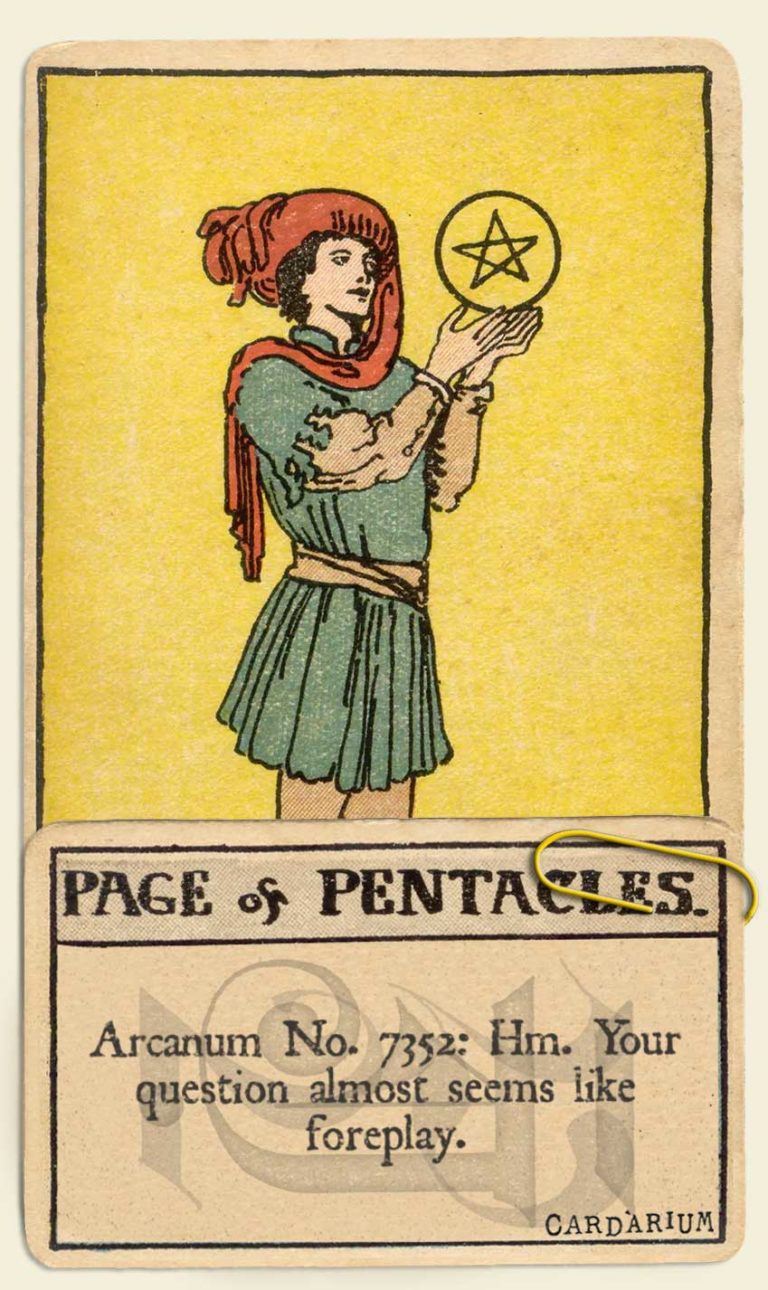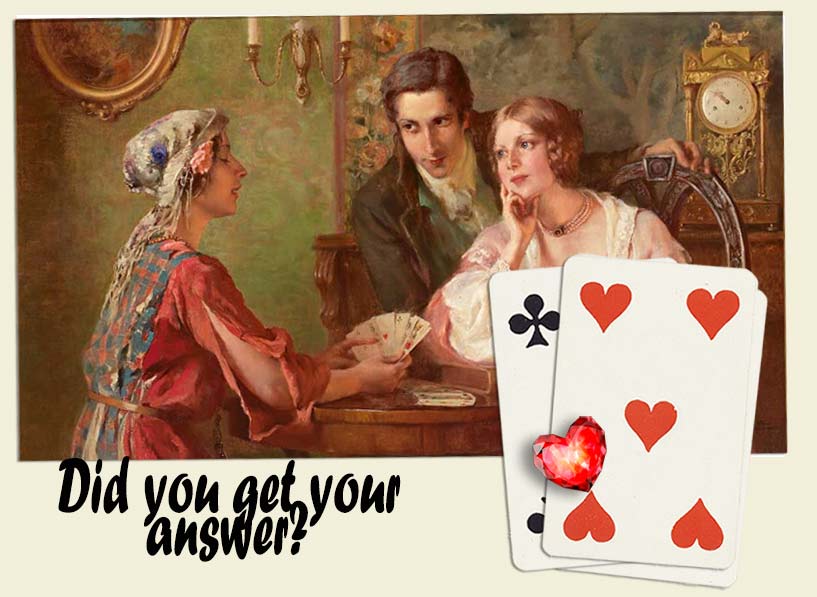Tarot Love Reading - 5 Insights into Your Present Love State of Affairs

How To Read Love Tarot
Always remember the Number One and the Most Important Rule of all: in Love and in War there are no rules.
You will find 5 Tarot cards below. Turn them and see what you get.
Then, take a deep breath and let your heart and intuition decide. It is that simple.
The 5-card Tarot spread is based on the American (Rider-Waite) Tarot. The cards are from the original deck published in 1910 – no more, nor less – 110 years old.
Oh, so many hands have shuffled those cards! Oh, so many souls have searched for meaning in their layouts! You are not alone looking for love in their arcane universe.
Step I. Turn the cards in order to see your love omens for today.
Step II. You will notice a small message card attached to every tarot card. These messages are called “specific arcanum”. They will help you interpret the meanings of the base tarot cards.
Step III. Click the cards for the second time to get a classic American (Rider-Waite) Tarot explanation of their meanings.
Step IV. Finally – concentrate for a minute. Look at the cards, then look into your soul, look into the depths of your thoughts and mental connections. That’s where the real magic of the tarot reading hides. And that’s where you will find the best insights.



QUEEN OF WANDS INTERPRETATION
The meaning for love is clarified by specific arcanum: His hand pressed against her bare palm. The touch was a whisper in a language she didn’t speak very well.
Original description of the card by the author – Arthur Edward Waite: The Wands throughout this suit are always in leaf, as it is a suit of life and animation. Emotionally and otherwise, the Queen’s personality corresponds to that of the King, but is more magnetic.


PAGE OF SWORDS INTERPRETATION
In relation to love and feelings, this card has additional arcanum: Thank god he’s holding me because if he weren’t, I’d float away like a large happily smiling ballon.
Original description of the card by the author – Arthur Edward Waite: A lithe, active figure holds a sword upright in both hands, while in the act of swift walking. He is passing over rugged land, and about his way the clouds are collocated wildly. He is alert and lithe, looking this way and that, as if an expected enemy might appear at any moment.


2 OF CUPS INTERPRETATION
Additional omen for love: Talking quietly together. This is what the couples do. Getting his reassurance. Giving him the same.
Original description of the card by the author – Arthur Edward Waite: A youth and maiden are pledging one another, and above their cups rises the Caduceus of Hermes, between the great wings of which there appears a lion’s head. It is a variant of a sign which is found in a few old examples of this card. Some curious emblematical meanings are attached to it, but they do not concern us in this place.


PAGE OF PENTACLES INTERPRETATION
Additional omen for love: Hm. Your question almost seems like foreplay.
Original description of the card by the author – Arthur Edward Waite: A youthful figure, looking intently at the pentacle which hovers over his raised hands. He moves slowly, insensible of that which is about him.


STRENGTH INTERPRETATION
A special insight for love: Very well, she said. Here is my best offer – Half of my nakedness for all of yours.
Original description of the card by the author – Arthur Edward Waite: A woman, over whose head there broods the same symbol of life which we have seen in the card of the Hierophant, is closing the jaws of a lion. The only point in which this design differs from the conventional presentations is that her beneficent fortitude has already subdued the lion, which is being led by a chain of flowers. For reasons which satisfy myself, this card has been interchanged with that of Justice, which is usually numbered eight. As the variation carries nothing with it which will signify to the reader, there is no cause for explanation. Fortitude, in one of its most exalted aspects, is connected with the Divine Mystery of Union, the virtue, of course, operates in all planes, and hence draws on all in its symbolism. It connects also with innocentia inviolata, and with the strength which resides in contemplation.
These higher meanings are, however, matters of inference, and I do not suggest that they are transparent on the surface of the card. They are intimated in a concealed manner by the chain of flowers, which signifies, among many other things, the sweet yoke and the light burden of Divine Law, when it has been taken into the heart of hearts. The card has nothing to do with self-confidence in the ordinary sense, though this has been suggested—but it concerns the confidence of those whose strength is God (Nature), who have found their refuge in Him. There is one aspect in which the lion signifies the passions, and she who is called Strength is the higher nature in its liberation. It has walked upon the asp and the basilisk and has trodden down the lion and the dragon.
This is it for today, traveler.
May the Gods of arcane grant you all your wishes.
May the Love divine be your daily companion.


How was it? Was is useful and fun?
Click on a star to give it a rating!
Average rating 4.4 / 5. Vote count: 661
No votes so far! Be the first to rate this post.
Thank you! You know, we are a bit nuts about card readings. Let us know about your experience! Hit or miss? Anything interesting?

What's next? Cardarium visitors also liked these card readings:

Sharing is caring!



